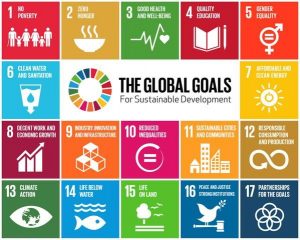
January 14, 2019//-Achieving the Sustainable Development Goals, the World Bank’s twin goals—or any other development goal for that matter—hinges on sustained economic growth in emerging market and developing economies (EMDEs).
This growth in turn depends on macroeconomic stability. The semi-annual Global Economic Prospects (GEP) report assesses the global outlook for growth and stability in these countries.
The January 2019 edition, Darkening Skies, highlights how precarious the current economic juncture is. In a nutshell, growth has weakened, trade tensions remain high, several developing economies have experienced financial stress, and risks to the outlook have increased.
As the report points out, EMDEs face some of the greatest risks. If a trade war between the United States and China contributes to a global slowdown, the spillover effects on EMDEs could be profound.
Similarly, a sharp increase in global interest rates would severely affect highly indebted EMDEs, as Turkey and Argentina painfully discovered last summer.
Since the global outlook depends heavily on advanced economies, the GEP also flags the implications of advanced-economy policies for EMDEs. In January 2018, when there was a celebratory mood about the synchronized recovery among advanced economies and EMDEs, the GEP questioned its duration, even in its title: Broad-Based Upturn, but for How Long?
That skepticism came from a close study of potential growth—the amount by which the economy would grow if all factors were fully employed— which found this to be wanting in many economies because of the previous years’ slowdown in productivity and investment growth.
The GEP does not just analyze short-run growth forecasts; it embeds these forecasts in a longer-run view of the economy. This edition of the GEP continues that tradition with a comprehensive study of the informal economy, something which could in the short-run be a shock absorber, but in the long-run is associated with low productivity.
The analysis suggests that the informal sector’s role in absorbing labour during downturns is limited. However, the potential long-term gains from increasing productivity in the informal sector are substantial.
This edition also presents evidence that debt in low-income countries is on the rise, an issue that is being discussed extensively in policy circles. The GEP tries to hit the sweet spot between discussing topical policy issues and undertaking rigorous analytical work.
On the one hand, analysts, especially those in international organizations, are sometimes cautious about speaking out on the global economy—especially when the prospects are not good—lest they exacerbate the pessimism.
On the other hand, the public is subject to so much half-baked analysis, half-truths, and fake news that an analytically rigorous report such as the GEP is critical to an informed debate. Public policy is not made by “whispering in the finance minister’s ear.”
Rather, it is made by arriving at a political consensus. That consensus is more likely to improve people’s lives if the public is informed with evidence. Like its predecessors, this edition of the GEP is a contribution to that evidence.
By Shantayanan Devarajan, Senior Director Development Economics Vice Presidency The World Bank Group


